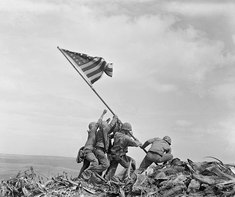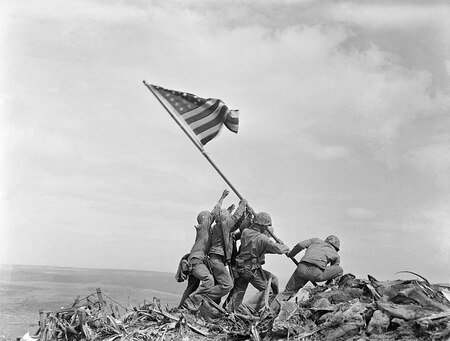
WWII Explained Part II (20th century explained #5)
Last updated: Wednesday April 21st, 2021
Report this blog
The 20th Century
In this series, I explore events that happened during the 20th century. I will be exploring topics ranging from the World Wars to the Cold War, from the Great Depression to the Fall of communism. This is the fifth of this series. This is about WWII in Asia and the Pacific.
World War II (part II)
Japan had taken advantage of China's Civil War and invaded in 1937. The communists and republicans formed a sort of truce to fight Japan away. During their invasion, Japan committed brutal atrocities against the Chinese people in cities like Beijing and Nanjing. Japan wanted an empire that would supply itself with natural resources instead of importing them from the United States, which stopped supplying Japan. But before it could do anything, it needed to destroy the US navy. That way, it could show its dominance over the US. So, on the morning of December 7th, 1941, Japanese airplanes headed to the Philippines and Guam. Most importantly, they went to Pearl Harbor. The attack was initially a success. Many battleships were destroyed or damaged, and few Japanese pilots were injured. But, like operation Barbarossa, it was a massive failure. Just like Germany’s attack on Russia, Japan’s attack lured the US into WWII. True, Japan did destroy most of the US Fleet. But it didn’t attack the naval repair yards or the submarine bases, meaning that the US navy would be up and running in a few months. But before they could intervene, Japan made staggering progress. They took over Indochina, made Thailand join them so they could get through to Malay, defeated Malaya and Singapore, and defeated the Dutch East Indies as well as the Philippines, and were bombing Australian Cities including Darwin. The Japanese wanted to take the key island of Midway. So they planned to distract the US with a decoy attack on the Aleutian Islands. But the Americans were ready. They had deciphered Japan’s plans and did a major blow on Japan’s navy. Traditionally, ships would come close, then shoot at the other ships with cannons, or as weaponry got more advanced, large guns. But as more advanced aircraft carriers were created, the aircraft carriers were wary of getting damaged, and so launched planes from their decks that then dropped bombs on enemy ships. In the first few moments, the US sunk three Japanese carriers. Only one Japanese carrier remained. It was sunk, too, but it was able to launch a wave of airplanes that sunk the USS Yorktown. It was the only carrier that the US would lose in the battle. The Americans stopped the Japanese, who were forced to retreat.
Meanwhile in the US, panic, and fear took hold of the American public, worried about Japanese spies. During WWII, most Japanese-Americans were living on the west coast, especially in California. In FDR’s Executive Order 9066, which meant that all Japanese Americans had to leave the states of Alaska, California, and parts of Oregon, Washington, and Arizona, except ones in the camps there. To locate them, the government used census data from 1940, even though using Census data was illegal. Officially, they were supposed to leave the Pacific coast because the government was afraid that they might be spies. However, many historians agree that the internment camps were, at least in part, influenced by racism. At the time, there was large-scale discrimination against Asian Americans, just like African-Americans and Mexican-Americans. Many Korean and Chinese-Americans had to wear pins that said, “I am Korean/Chinese.” After a little research, I discovered that fewer than 15,000 Germans, Italians, Hungarians, Bulgarians, and Romanians were put into concentration camps, as opposed to 110,000 Japanese. That meant that the descendants running the United States did not want to “hurt” European Christian countries, as opposed to Japan’s Buddist, Shintoist, and Confucianist population. Also, I found out that there is no evidence that there were any spies with Japanese ancestry. 10 people were convicted of spying for Japan, but none were of Japanese ancestry.
Back in the Pacific, the Americans had a new strategy: Island Hopping. Two fleets, led by Admiral Chester Nimitz and James Doolittle, started in Hawaii and Brisbane, respectively. From June 1943 onwards, they “hopped” from one Japanese-controlled island to another, trying to take the island. Both fleets were able to capture the islands that they were “hopping” on before combining at Okinawa and defeating a force of 110,000 Japanese and Okinawan soldiers and conscripts in June of 1945. By then, the door to Japan was open. After Japan refused to unconditionally surrender (though they wanted a conditional surrender, the US had called for an unconditional surrender), atomic bombs were dropped on the civilian cities of Hiroshima and Nagasaki. 110,000 people were killed instantly in the two cities combined, with 70,000 more dying of burns and/or radiation sickness caused by the bomb. Additionally, the USSR invaded Manchukuo, later handed over to the communists in the Chinese Civil War (coming soon!). And with that, WWII was over. There was, however, a lasting effect on world history and politics. The Chinese Civil War, the Vietnam War, the Indian Independence Movement, and many more conflicts and demonstrations were fueled in part or whole by WWII. Japan was occupied by the US with some help from the UK. And now, a period of world peace where there will definitely absolutely 100% NEVER be any wars happening again (that’s called foreshadowing.)
Images

Helpful Youtube Channels
These are some of my favorite Youtube Channels that talk about Geography, History, Geo-Politics, and other interesting topics.
American Museum of Natural History
Special thanks to PakistanPunk for his recommendation of British Pathé!
Also, check out Brainpop!
Thanks for reading!

“ I’m not crying, it just sometimes..... WHEN I”M SAD....... WATER.......... Comes out of my eyes.
“ Mommy says its a big nose for a BIG BOY.
“ you pig faced idiotic(whatever Lenin says) Cereal is A SOUP.
“ How bout we send you to the Guilotine instead”
“ Did I say feather hats, I meant (whatever he says)